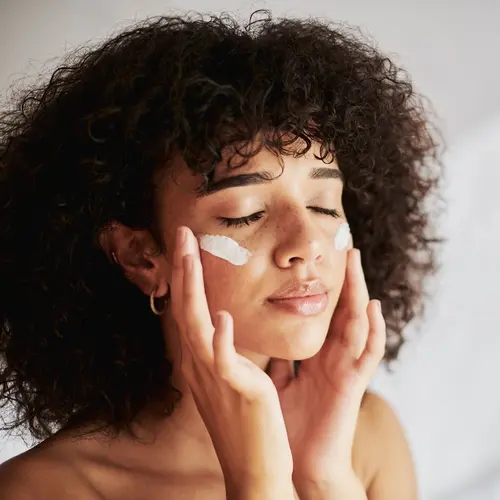
Ah, the sun -- our beloved source of light, warmth, and vitamin D. If only it didn’t have such destructive effects on your skin.
Age spots, or the benign, light-brown flat spots that pop up on your skin as you age, are a bit of a misnomer. While they do develop over time, they’re often the result of the sun. The technical term is a solar lentigo. Jerome Garden, MD, a professor of clinical dermatology at Northwestern University Medical School, explains.
What are age spots, and does the sun alone cause them?
Garden: Age spots are common benign skin spots with clearly defined edges on your face or other sun-exposed areas. They usually form due to exposure to the sun. Other sources of UV light, such as tanning beds, can also be a source. Some types of spots and growths also occur as we age, which people may refer to as age spots. All of these should be evaluated by a dermatologist to rule out a more serious type of pigmented spot.
What at-home treatments are available, and do they work?
Garden: Most over-the-counter skin lighteners contain a retinoid or hydroquinone ingredient, which can be mildly effective in some patients. But long-term hydroquinone use -- beyond a few months -- may result in darkening of the skin, and retinoids may be irritating to sensitive skin, so they should be monitored by a dermatologist. If you don’t see the results you want, a dermatologist can prescribe a prescription-strength cream.
What in-office treatments can I try?
Garden: The most effective treatment is a laser that specifically targets pigment. After one or two treatments, it can significantly lighten and even remove brown spots. But lasers have potential risks, including burns, scars, and color change, so they should only be used by a trained physician. Another procedure is cryotherapy, which uses liquid nitrogen to injure the cells in the age spot. It can be a bit painful, but very quick. Risks include scarring and skin lightening or darkening, but they’re low when performed by your dermatologist.
Are results permanent?
Garden: Since most therapies will only fade the spots, you may need touch-up therapy as time passes, regardless of which therapeutic approach you use.
When should I see a doctor?
Garden: It’s a good idea to see a board-certified dermatologist to accurately diagnose a brown spot. Brown spots can also potentially be a dangerous skin cancer. Once a diagnosis is made, you can decide whether to use an over-the-counter approach or something more aggressive.
4 Tips
The No. 1 thing that prevents age spots is protection from the sun, says Garden. Here’s what to do.
- Don't wait. “No matter your age, your older self will thank you if you start protecting your skin now,” he says.
- Wear sunscreen. Apply sunscreen every day with an SPF of at least 30, preferably higher. Reapply it every 2 to 3 hours.
- Cover up. Wear sun-protective clothing. Even if it’s warm, wear a lightweight cover-up to shield your skin. Top it off with a wide-brimmed hat.
- Prevent a repeat. “Even if your spots fade with treatment, the residual spots will become darker with ongoing sun exposure,” says Garden. Protect them from the sun to prevent a repeat.
Find more articles, browse back issues, and read the current issue of WebMD Magazine.

